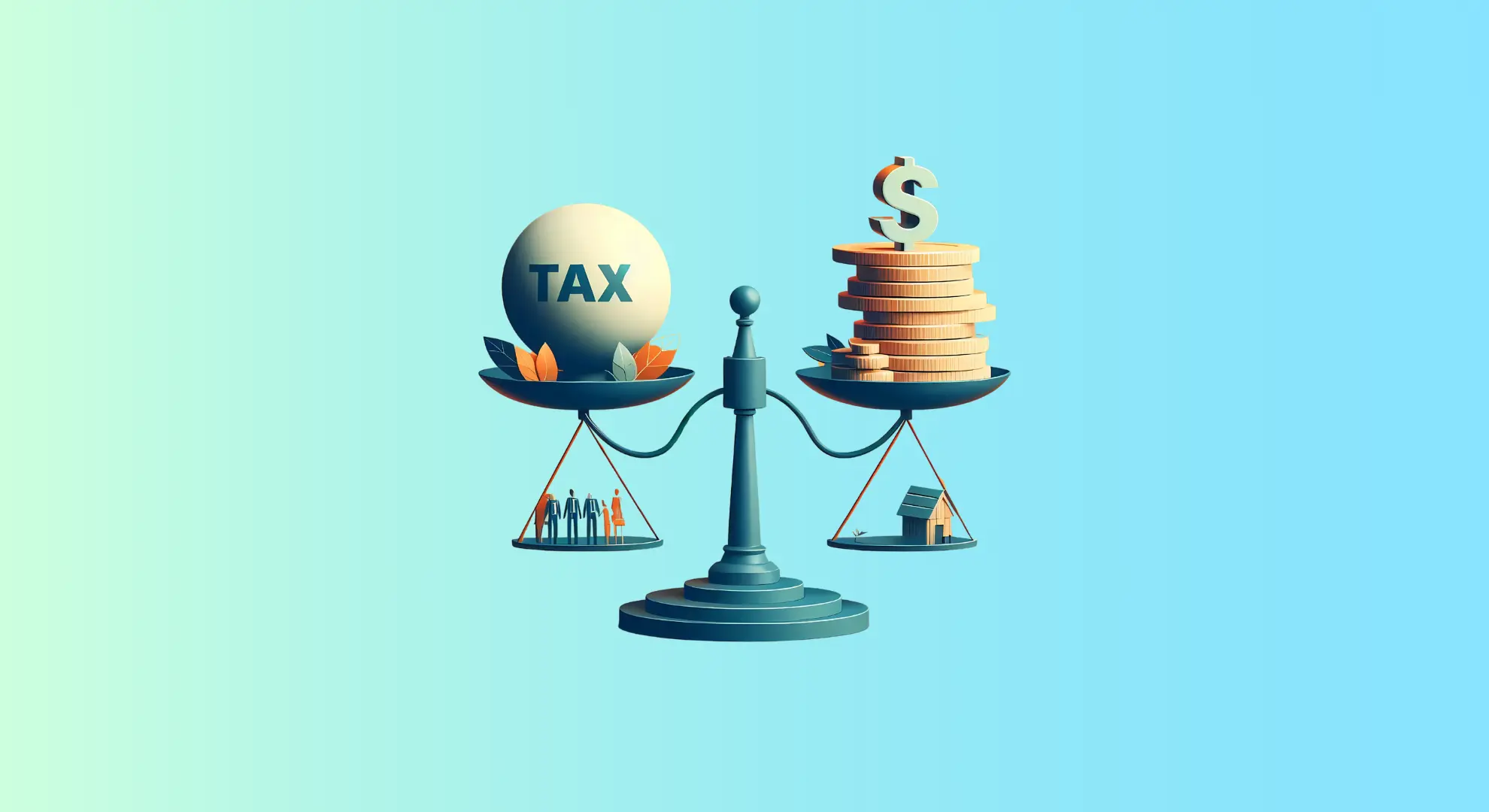Understanding the difference between a Deferred Tax Asset and a Deferred Tax Liability is crucial for any business, particularly when navigating tax season. Both play a pivotal role in companies reporting their tax obligations, ensuring they comply with tax laws while managing cash flow effectively.
In this blog, we’ll explore the key differences between a Deferred Tax Asset and a Deferred Tax Liability, how they work, and how to calculate them. We’ll also dive into real-world examples to clarify how they apply to financial reporting.
Table of Contents
What is a Deferred Tax Asset?
A Deferred Tax Asset is an item on a company’s balance sheet that reflects an overpayment or advance payment of taxes. It represents a future tax benefit, meaning that the company can reduce future tax liabilities by the amount of the deferred tax asset.
Deferred tax assets are created when a business pays more taxes than it owes in the short term. Over time, these assets are “recovered” as the company applies them to reduce future taxable income.
How Does a Deferred Tax Asset Work?
A Deferred Tax Asset typically occurs due to temporary differences between accounting and taxable income. For instance, if a business recognizes an expense for financial reporting purposes but delays the recognition of that expense for tax purposes, it creates a deferred tax asset.
When the business eventually recognizes the expense for tax purposes, it can use the deferred tax asset to reduce its liability. Essentially, the asset represents money the company has already paid in taxes that it can use to offset future tax obligations.
Examples of Deferred Tax Assets
Here are a few examples that illustrate how deferred tax assets work:
- Net Operating Losses (NOL): When a company incurs losses, those losses can be carried forward to future years to offset taxable income. These losses create deferred tax assets because they reduce future tax liabilities.
- Warranty Expenses: If a business recognizes warranty expenses in its financial statements but does not yet deduct them for tax purposes, this difference creates a deferred tax asset.
- Depreciation: If a business uses accelerated depreciation for financial reporting but straight-line depreciation for tax purposes, it may create a deferred tax asset in the earlier years.

How to Calculate Deferred Tax Asset
To calculate a Deferred Tax Asset, you need to determine the temporary difference between the book value of an asset or liability and its tax base. Here’s the formula:
Deferred Tax Asset = Temporary Difference × Tax Rate
For example, if a company has a temporary difference of $10,000 due to net operating losses and the tax rate is 20%, the deferred tax asset would be:
Deferred Tax Asset = 10,000 × 0.20=2,000
The company can use $2,000 to reduce its future tax liabilities.
What is a Deferred Tax Liability?
A Deferred Tax Liability is the opposite of a deferred tax asset. It represents a future tax payment that a company must make due to temporary differences between accounting and taxable income.
A deferred tax liability occurs when a business delays paying taxes on income recognized in the financial statements. This means the company will owe taxes in the future, even though it may not owe them immediately.
How Does a Deferred Tax Liability Work?
A Deferred Tax Liability is created when a company records a tax expense on its financial statements but does not pay that amount in taxes during the financial reporting period. This discrepancy happens due to temporary differences, such as depreciation methods for financial reporting and tax purposes.
Over time, the company will pay the deferred tax liability when the timing differences reverse. For instance, when the company finally recognizes the income or expense for tax purposes, it must pay the deferred tax.
Examples of Deferred Tax Liabilities
Here are a few common examples of deferred tax liabilities:
- Accelerated Depreciation: If a business uses accelerated depreciation for tax purposes but straight-line depreciation for financial reporting, it will report lower taxable income in the early years. This creates a deferred tax liability since the company will owe more taxes in the future when the depreciation difference reverses.
- Installment Sales: If a business sells products on an installment basis, it may recognize revenue for financial reporting purposes but defer recognizing the income for tax purposes, creating a deferred tax liability.
- Prepaid Revenue: If a company receives payment for services it will provide in the future, it may recognize the revenue immediately for financial reporting but defer it for tax purposes, creating a deferred tax liability.
How to Calculate Deferred Tax Liability
To calculate a Deferred Tax Liability, the same formula as for the deferred tax asset applies:
Deferred Tax Liability = Temporary Difference × Tax Rate
For example, if a company has a temporary difference of $15,000 due to accelerated depreciation and the tax rate is 25%, the deferred tax liability would be:
Deferred Tax Liability = 15,000 × 0.25=3,750
The company must pay $3,750 in future taxes when the temporary difference reverses.
Deferred Tax Asset vs Deferred Tax Liability: Key Differences
| Aspect | Deferred Tax Asset | Deferred Tax Liability |
| Definition | Overpayment or advance payment of taxes | Future tax payments due to temporary differences |
| Impact on Financials | Reduces future tax liabilities | Increases future tax liabilities |
| Common Examples | Net operating losses, warranty expenses | Accelerated depreciation, installment sales |
| Timing | Occurs when expenses are recognized in advance | Occurs when income is recognized in advance |
| Calculation | Temporary Difference × Tax Rate | Temporary Difference × Tax Rate |
The table above highlights the essential differences between Deferred Tax Assets and Deferred Tax Liabilities. While both deal with temporary differences between accounting and taxable income, they have opposite effects on future tax liabilities.
What causes a Deferred Tax Liability?
A Deferred Tax Liability is caused by timing differences between how income or expenses are recognized for financial reporting and tax purposes. For example, if a company uses accelerated depreciation for tax purposes but straight-line depreciation for financial reporting, it creates a deferred tax liability.
Can Deferred Tax Assets and Liability exist at the same time?
Yes, a company can simultaneously have both Deferred Tax Assets and Deferred Tax Liabilities on its balance sheet. This situation typically arises when different temporary differences exist in various business areas. For instance, a company may have a deferred tax asset from net operating losses while simultaneously having a deferred tax liability from accelerated depreciation.
Deferred Revenue vs Deferred Tax Liability: What’s the difference?
Deferred Revenue is the money a company receives in advance for services or products it has yet to deliver. In contrast, a Deferred Tax Liability arises when there are differences in income or expenses between financial reporting and tax reporting. While deferred revenue relates to the company’s customers, deferred tax liabilities relate to tax authorities.

Conclusion
Understanding the distinction between Deferred Tax Assets and Deferred Tax Liabilities is essential for effectively managing a company’s tax strategy. Both are driven by temporary differences between how income and expenses are recognized for accounting and tax purposes, but they have opposite effects on future tax liabilities.
By calculating these deferred tax items accurately, businesses can plan for future tax payments or benefits, ensuring they maintain proper financial health and compliance with tax laws.










